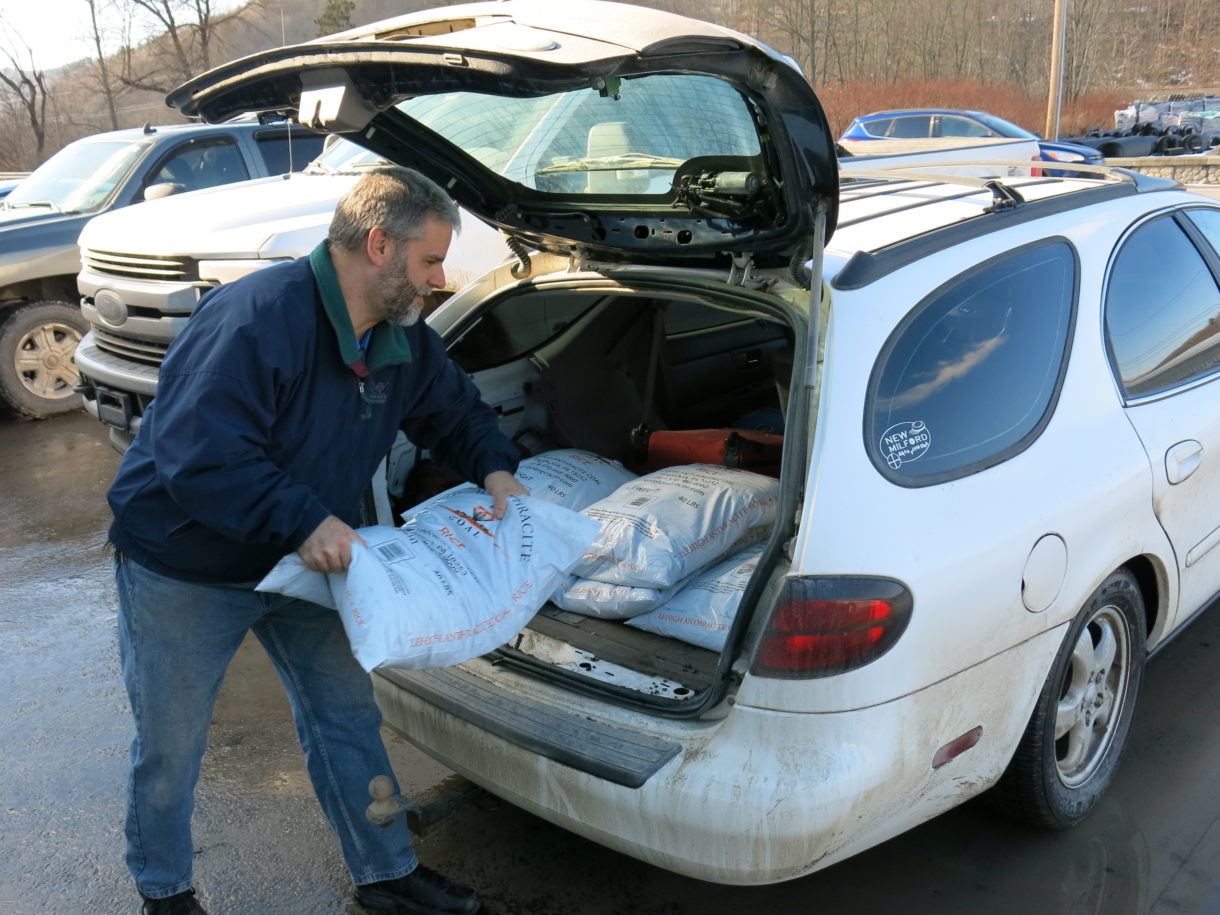Every few weeks, John Ord does something unusual for most people living in 2019 — he stops by a local hardware store in rural northeastern Pennsylvania to buy coal to heat his home.
He recently spent about $56 to buy 400 pounds of coal. That will keep his 2,400-square-foot house a toasty 70 to 72 degrees for a couple of weeks.
“This is the whole glamorous part, right here,” says Ord, as he loads 40-pound bags of Pennsylvania anthracite coal into the back of his white station wagon.
When he gets home, Ord lugs the coal down to his basement, where he rips open a bag, lifts it chest high and loads it into a hopper on the back of his coal-burning stove.
It’s a lot more work than most Americans with gas or electric heat go through to keep their homes warm. They can just set a thermostat and forget it. But Ord says this is actually less work than the wood stove he replaced last fall.
“Between cutting it [wood], stacking it, letting it season, moving it into the space where you need to access it and then loading the stove,” Ord says, wood requires a lot more handling.
Ord’s coal-burning stove burns 24 hours a day when it’s cold. He likes the constant heat it gives off and says it’s cheaper than his other options — oil and electric.
While most power plants around the United States burn bituminous coal, northeastern Pennsylvania is very proud of its anthracite coal, which is shinier and harder than you might expect. Ord says it burns cleaner too.
To demonstrate this, he goes outside and points up to a white chimney. “No smoke at all. There’s no smell to it,” says Ord.
But burning anthracite coal does emit more carbon dioxide per unit of heat than just about any other fuel, according to the Energy Information Administration. That makes it a contributor to climate change.
Anthracite backers point out that it has less sulfur than bituminous coal, but environmentalists say cleaner does not mean clean.
“It still emits quite a bit of dangerous sulfur dioxide, as well as heavy metals such as lead, arsenic, and mercury,” says Tom Schuster with the Sierra Club’s Beyond Coal campaign. He says anyone concerned about their contribution to climate change should avoid burning coal for heat.
Those in the anthracite coal business counter that the industry is so small that it’s not a big contributor to greenhouse gas emissions.
“If you want to look at the major CO2 producers in the world, it’s not us,” says Matt Atkinson, co-owner of Leisure Line Stove Company in Berwick, Pa. “And even if we quadrupled our current sales, it still wouldn’t be a problem.”
Seeking a new generation of customers
There was a time when coal was king in the home-heating business. In 1940, more than half of U.S. homes burned coal, according to the Census Bureau. It was a big business and such a part of the culture that coal company ads were heard regularly on the radio.
Listen to a 1953 Blue Coal radio advertisement here:
(Credit: Pennsylvania Historical and Museum Commission/Pennsylvania Anthracite Heritage Museum)
After decades of decline, fewer than 130,000 households use coal for heat today. Half of them are in Pennsylvania, and the state’s coal industry wants to boost that. It has a plan to attract more customers.
Atkinson is among those leading the campaign. He bought Leisure Line with a business partner in 2009 and says he got into the coal stove business after experiencing a friend’s stove.
“When I opened the door, I felt this warmth that I had never felt before. … And I was hooked instantly,” says Atkinson. Talk to coal-heat advocates in Pennsylvania, and you’ll hear this repeatedly — that there’s no heat as intense as coal heat.
It’s clear that many people in northeastern Pennsylvania, the heart of anthracite coal country, have an emotional attachment to this fossil fuel.
“You have people here that their great-great-grandfathers were miners. Their grandfathers were miners. It’s a family of mining,” says Andrew Meyers, sales manager for Blaschak Coal Corp. His company also is leading the campaign to attract new customers.
“It’s mostly about growing market share within the home-heating industry,” says Atkinson. He hopes to attract a new generation of customers with the message that they can save money on heating their home if they choose coal.
In Reading, Pa., Kelly Brown welcomes the campaign. Her family’s business, F.M. Brown’s Sons, has sold coal for nearly a century and is one of the few to survive the industry’s decline.
“In this general area, there was probably about 50 coal companies. Slowly, one by one, they started closing up,” says Brown. Now her company is the only one left in Berks County.
She says the industry has improved its environmental record over the years. Pennsylvania was the first state to pass an act to address abandoned-mine reclamation, and today coal companies like to tout their work in this area.
Given Pennsylvania’s abundant coal reserves and a bigger focus on improving coal’s environmental record, Brown hopes the industry will stage a comeback. “I might not see it in my lifetime, but I think things will turn around,” she says.
So far the trend is not moving in Brown’s favor. Even in Pennsylvania, the number of households using coal for heat continues a steady decline.
9(MDEwNzczMDA2MDEzNTg3ODA1MTAzZjYxNg004))
